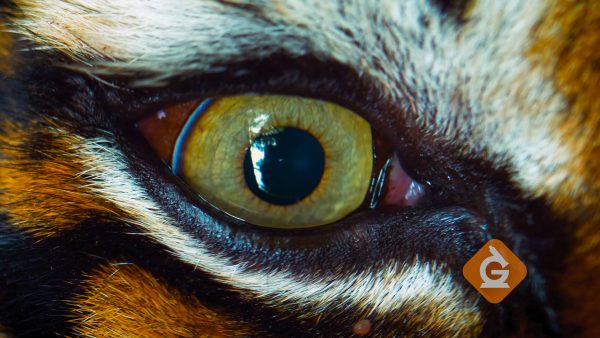Senses Definition
Senses are something animals use to find out information about the world around them so they can survive. Our five senses are sight, smell, taste, touch and feel.
View Lesson on The Five Senses
Become a member to get full access to our entire library of learning videos, reading material, quiz games, simple DIY activities & more.
Become a member to get full access to our entire library of learning videos, quiz games, & more.
Plans & Pricingto watch this full video.

Access All Videos
and Lessons, No Limits.
Access All Videos

No credit card required,
takes 7 sec to signup.
No card required

Ready-to-go lessons
that save you time.
Ready-to-go lessons
If you are on a school computer or network, ask your tech person to whitelist these URLs:
*.wistia.com, fast.wistia.com, fast.wistia.net, embedwistia-a.akamaihd.net
Sometimes a simple refresh solves this issue. If you need further help, contact us.
The Five Senses
Fun Facts
- Tigers use their eyes to hunt and find food.
- Elephants use their trunk to explore the world and find food.
- Pigs can find food buried underground using their sense of smell.
Why Do We Need To Know About Senses
Learning about our senses helps us understand how important they are for different jobs and for keeping us safe and healthy. For example, being able to see helps scientists identify plants and chefs to cook. Tasting helps make sure food is good to eat.
Hearing is needed for jobs like firefighting where listening for alarms can save lives. Smelling and feeling are important for people working with plants to tell if they are healthy. These examples show that our senses do more than just help us live; they help us in our jobs and keep us safe.
Frequently Asked Questions
Check out the Full Lesson on The Five Senses
In this lesson, we learn that:
- Animals and plants gather information about the world through their senses.
- The five senses are seeing, hearing, tasting, touching and smelling.
- Senses help living things survive in their environment.
Related Topics
- Astronomy Definition
- Binary Code Definition
- Biomimicry Definition
- Biosphere Definition
- Climate Definition
- DNA Definition
- Definition Of Experiment
- Definition Of Force
- Definition Of Human Body Systems
- Definition Of Non-living Things
- Divergent Boundary Definition
- Earth’s Axis Definition
- Electromagnet Definition
- Electron Definition
- Environment Definition
- Erosion Definition
- Exoskeleton Definition
- Fossil Definition
- Freezing Definition
- Geologic Time Scale Definition
- Humidity Definition
- Igneous Rock Definition
- Keystone Species Definition
- Landform Definition
- Lunar Mare Definition
- Material Definition
- Multicellular Definition
- Natural Resource Definition
- Natural Selection Definition
- Nervous System Definition
- Ocean Current Definition
- Pollen Definition
- Potential Energy Definition
- Pull Definition
- Reflecting Surface Definition
- Rock Definition
- Season Definition
- Seed Dispersal Definition
- Seeing Definition
- Senses Definition
- Smelling Definition
- Snow Definition
- Soil Definition
- Star Definition
- Texture Definition
- Thermal Energy Definition
- Translucent Definition
- Wave Reflection Definition
Start a Free Trial Today. Get a $5 Amazon Gift Card!
Teachers! Start a free trial & we'll send your gift card within 1 day. Only cards left. Try it now.
Select Grade
Select Subject
This email is associated with a Science Kit subscription. Kit subscriptions are managed on this separate page: Manage Subscription

-
Download InvoiceScience & Math$/yr
-
Download InvoiceScience Only$/yr

access all lessons
• No credit card required •
"My students loved the videos. I started the video subscription in May and used them as a review before the state test, which I know contributed to 100% of my class passing the state test."
Rhonda Fox 4th Grade Teacher, Ocala, Florida
Use Generation Genius in Your School
Access all lessons free for 30 days.
"My students loved the videos. I started the video subscription in May and used them as a review before the state test, which I know contributed to 100% of my class passing the state test."
Rhonda Fox 4th Grade Teacher, Ocala, Florida
• No credit card required •
Already a member? Sign In
* no credit card required *

* no credit card required *
* no credit card required *


to Discover the Benefits of Generation Genius
Learn How to Save for Your School & District!

no credit card required
Skip, I will use a 3 day free trial
Enjoy your free 30 days trial
-
Unlimited access to our full library
of videos & lessons for grades K-5. -
You won’t be billed unless you keep your
account open past your 14-day free trial. -
You can cancel anytime in 1 click on the
manage account page or by emailing us.
-
Unlimited access to our full library of videos & lessons for grades K-5.
-
You won't be billed unless you keep your account open past 14 days.
-
You can cancel anytime in 1-click on the manage account page.
Cancel anytime in 1-click on the manage account page before the trial ends and you won't be charged.
Otherwise you will pay just $10 CAD/month for the service as long as your account is open.
Cancel anytime on the manage account page in 1-click and you won't be charged.
Otherwise you will pay $10 CAD/month for the service as long as your account is open.
We just sent you a confirmation email. Enjoy!
DoneWe use cookies to make your experience with this site better. By using this site you agree to our use of cookies. Click "Decline" to delete and block any non-essential cookies for this site on this specific property, device, and browser. Please read our privacy policy for more information on the cookies we use.Learn More
We use cookies to improve your experience. By using this site, you agree to our use of cookies. Click "Decline" to block non-essential cookies. See our privacy policy for details.Learn More




























































































































